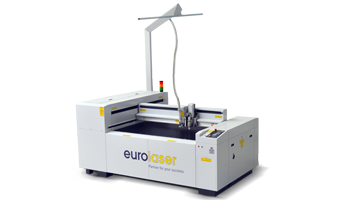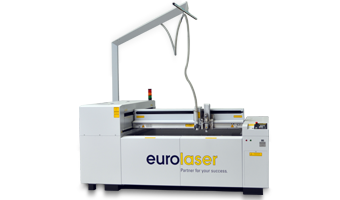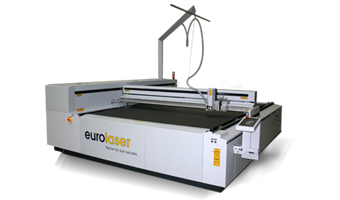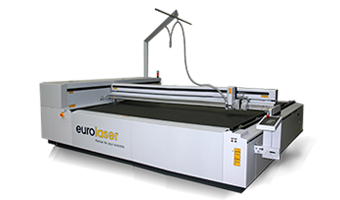This is where laser technology excels:
- Filigree contours possible
- Can be used for a wide range of foams (open-cell, closed-cell, and mixed-cell)
- Engravings or markings in one operation
- No drying necessary like when cutting with a water jet
- High tool flexibility - e.g. laser, knife, or marker (3in1)
- No distortion of the material during the cutting process
- No material warping
- Flexible application
- Clean process with no residue on the tool or on the work surface

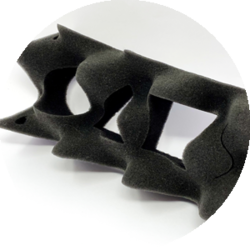
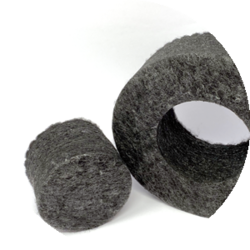
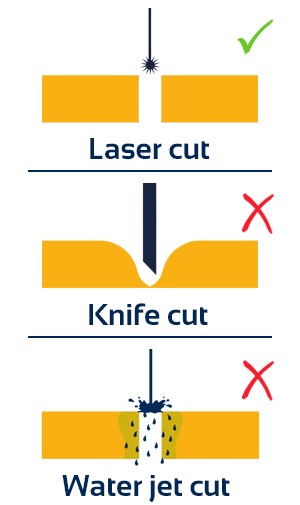
The laser in a tool comparison
When it comes to cutting industrial foams, the advantages of the laser over other cutting tools are obvious. While the knife exerts strong pressure on the foam and thus causes material distortion and unclean cut edges, the laser creates even the finest contours thanks to the precise and contactless cut. When cutting with a water jet, moisture is drawn into the absorbent foam during separation. Before any further processing, the material must first be dried, which is a time-consuming process. This process is omitted with laser cutting and you can continue working with the material immediately. The laser is so convincing in comparison and is clearly the number 1 tool for foam processing.

Foam made of polyurethane
For upholstery, sound insulation and automobile interiors, very soft foam is required. Foam made of polyurethane (PU or PUR) meets these requirements. It is used for example for lining A and B pillars in the automotive industry. Machining then occurs in textile form, whereby the core of the material is foamed. Tip for machining textile foam: By using a conveyor system the material can automatically be conveyed onto the processing table from the roll and cut.
In the field of upholstery foam, there is PU foam with different densities. Depending on the required strength and seating ergonomics, different degrees of hardness are merged. The graphics industry uses a harder form of PU foams for producing presentation materials.

Foam made of polyethylene
For packaging, rather harder foam is required. Polyethylene foams (PE) are suited to packaging inserts as well as insulation furnishings, seals and impact sound insulation. In pyramid form the foam is suited to acoustic insulation. Sound insulation furnishings can be found in sound studios, rehearsal rooms, production halls and offices. Targeted insulation in loudspeakers also ensures better sound quality. Any lining can also be directly processed by eurolaser’s laser systems.

Foam made of polypropylene
Packaging foam must fix transport goods on the one hand and also protect it from environmental impact. If very high quality packaging inlays are desired, foamed polypropylene(EPP or PP) is a very suitable material. The automotive industry likes to use this material for producing the interior. Due to its stability and the low weight, foam made of polypropylene is also frequently used in advertising.
Foam made of polystyrene
Polystyrene foam (PS), which is also known under the trade name Styrofoam, is used due to its harmlessness in the foodstuff industry. Electronics packaging is also made of Styrofoam. Due to its very low density, model builders often use polystyrene for airplane models.
eurolaser tests your material
Laser cutting systems are generally superbly suited to the processing of various foams. The emissions generated by cutting with CO2 lasers can be filtered by filter systems. In order to continuously expand our sample archive, we can also test your material in our application laboratory and create a detailed report for you. Please don’t hesitate to contact us.
Typical applications:
Do you have any questions? We are pleased to advise you.

